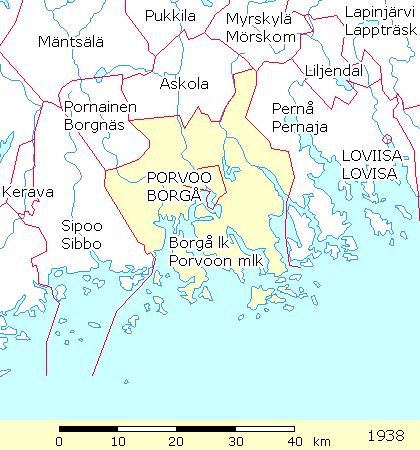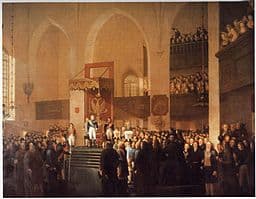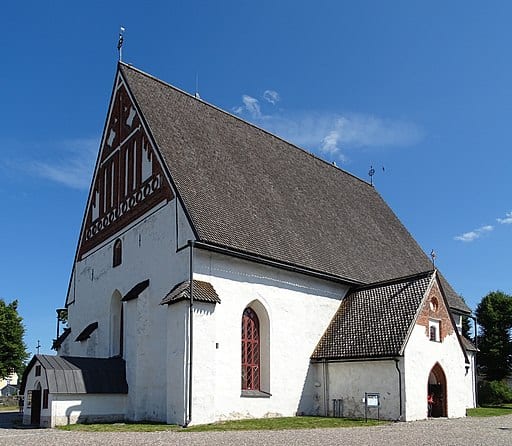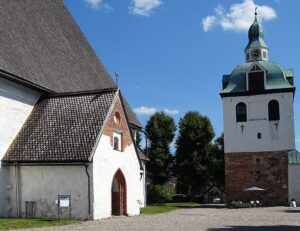Nyland
Borgå
Villages and Farms
- Antas
- Nygrannas
- Påvals
- Sigfreds
- Smeds
- Farm names not in parish records of 1880-1889
- Farm names not in parish records of 1880-1889
- Ångsåg
- Hommas
- Nilsas
- Nygrannas
- Spakis
- Spakis-Halsvik
- Storspik-Skeppar
- Storspik-Barnvik
- Storspik-Qvarnvik
- Hommas-Störsvik
- Nybygge
- Backman
- Drengar
- Boe Gård/Boegård
- Frugård
- Bertils
- Antas
- Dampas
- Klockars el. Ollas
- Stor Kornäs
- Kärras
- Nilsas
- Qvipars
- Tunnäs
- Qvarnen och Sågen
- Snickars
- Box
- Fogdas
- Hommas
- Norkulla
- Landondas
- Orra el Broas
- Smeds
- Eknäs
- Ekbacka
- Essvik
- Stor Ömans
- Lill Ömans
- Eriksdal
- Backas
- Henrikas
- Mattas
- Brinkens el. Brusas
- Knapas
- Stor Knuts
- Lill Knuts
- Martens
- Påås
- Hammars
- Farm names not in parish records of 1880–1889
- Farm names not in parish records of 1880-1889
- Bökars
- Henrikas
- Mattas
- Högbacka el. Broas
- Örnshamn
- Sjökulls
- Farm names not in parish records of 1880–1889
- Farm names not in parish records of 1880–1889
Farm names not in parish records of 1880–1889
- Farm names not in parish records of 1880–1889
- Farm names not in parish records of 1880–1889
- Hummelssund
- Bergs
- Wäfvarsbacka
- Clemets
- Er
- Fasa
- Gästgivars
- Jontas
- Kaspers
- Kraufvars
- Niku
- Sanis
- Smeds
- Qvarnarne
- Jackarby
- Rabbas
- Farm names not in parish records of 1880–1889
- Qvarnvik
- Farm names not in parish records of 1880–1889
- Farm names not in parish records of 1880–1889
- Farm names not in parish records of 1880–1889
- Filppula
- Gretas
- Hannula
- Heikkila
- Iso Huovilla
- Wähä Huovilla
- Holsti
- Ilmokasi
- Klemo
- Pelto-Knaapila
- Kylä-Knaapila
- Knaapila
- Iso Kupari
- Wähä Kupari
- Laurilla
- Kylän-Pietilä
- Metsä- Pietilä
- Seppälä el Langis
- Sihvola
- Kaunissaari
- Hannula
- Heikkilä
- Henttala
- Jaakkola
- Jussila
- Klemola
- Kylän-Lampila
- Lampila
- Uusi-Lampila
- Mäki-Lampila
- Lassila
- Lunkila
- Iso-Ojala
- Wähä-Ojala
- Ollila
- Skrana
- Tiittula
- Tukkila
- Iso-Tuomala
- Farm names not in parish records of 1880–1889
- Farm names not in parish records of 1880–1889
- Farm names not in parish records of 1880–1889
- Nietos
- Nikus
- Nybondas
- Nygrannas
- Yrjas
- Lill Yrjas
- Stor Krognäs
- Lill Krognäs
- Dobbas
- Storgård
- Frogdas
- Påvals
- Farm names not in parish records of 1880–1889
- Kulloo
- Andersas
- Backas
- Lill Bengts
- Broas
- Stor Jontas
- Lill Jontas
- Lavers
- Nyby Nybyggars
- Nygrannas
- Nyby Sisbacka
- Smeds
- Nyby Storbondas
- Farm names not in parish records of 1880–1889
- Lasses
- Fejars el. Backas
- Gråbonds
- Nybondas
- Starkis
- Tellen
- Gilders
- Grannas
- Svarthomen
- Farm names not in parish records of 1880–1889
- Ellmattas
- Hornhattas
- Kilas
- Knuters
- Knutsbacka
- Piltars
- Snickars
- Stens
- Yrjas
- Molnby
- Nybygget
- Mårtens el. Simons
- Nybondas
- Yrjas
- Clemets
- Gästgifvars
- Hannusas
- Henrikas
- Jonnas
- Knuts
- Lasas
- Mattas
- Qvarnen
- Weterby Nygård
- Nederstugu
- Smedens
- Näsegård
- Farm names not in parish records of 1880–1889
- Fadders
- Kattslätt
- Orras
- Dyvik
- Getviken
- Pirlax
- Domprostegården
- Kapellansgården
- Tingsgården
- Farm names not in parish records of 1880–1889
- Pörtölandet
- Söderskär
- Tullstaten
- Farm names not in parish records of 1880–1889
- Knuts
- Lassas
- Mattas
- Nikus
- Ollas
- Sipas
- Farm names not in parish records of 1880–1889
- Sannäs
- Nybygget
- Bengtsas
- Erikas
- Finnalais
- Gabbers
- Hakas
- Hansas
- Hästlakärs
- Krogars
- Martis
- Michels
- Månsas
- Nickars
- Nikus
- Saxaniemi
- Smeds
- Starkis
- Kurulais
- Hannusas
- Herrbacka
- Stor Ollas
- Lill Ollas
- Påvals
- Sparvvens
- Staffans
- Antas
- Fasa
- Jontas
- Nygramms
- Sillvastas
- Sipas
- Strengas
- Baggas
- Brukars
- Erikas
- Gries
- Mattas
- Qvis
- Sköldvik
- Gamla Sköldvik
- Backas
- Kärras
- Qvarnen
- Stensböle
- Brandts
- Tallas
- Glosholmen
- Gråns
- Mattas
- Ollas
- Reimars
- Smeds
- Staffans
- Wafvärs
- Biskopssätet
- Sundö
- Gräsörn
- Brasas
- Lillvik Bryggars
- Hinders
- Karlby Ingas
- Kaspersbacka
- Kenpas
- Koskos
- Labbas
- Langis el. Pellas
- Mensas
- Sillvik Nilsas
- Påvals
- Uppgrindas
- Upplabbas
- Svinö
- Brasas
- Lillvik Bryggars
- Hinders
- Karlby Ingas
- Kaspersbacka
- Kenpas
- Koskos
- Labbas
- Langis el. Pellas
- Mensas
- Sillvik Nilsas
- Påvals
- Uppgrindas
- Upplabbas
- Bryggars
- Nilsas
- Tolkis
- Backas
- Bryggars
- Clements
- Dalas
- Erikas
- Filplåts
- Gjelas
- Katrons
- Käldas
- Labbas
- Stor-Maris
- Lill-Maris
- Markusas
- Nygrannas
- Ulas
- Utegård
- Tarkmans el Pellas
- Tarkmans Tallbacka
- Wentzells gård
- Farm names not in parish records of 1880–1889
- Markusas
- Nybondas
- Nisssas
- Nygrens
- Ulas
- Yrjas
- Hnnula
- Hommas
- Markusas
- Mutti
- Knuts
- Lisus
- Warmans
- Domargård
- Heikkilä
- Honga
- Klemts
- Mandela
- Myllybacka
- Staffans
- Farm names not in parish records of 1880–1889
- Johans
- Rånäs
- Henrikas
- Baggas
- Finnas
- Hommas
- Lassas
- Nybondas
- Antas
- Hommas
- Jeppas
- Mattas
- Petas
- Uppstugu
- Åbygård
- Greis
- Grindas
- Henttala
- Jobs
- Mickos
- Nybacka
- Jobs
- Jontas
- Kockas
- Poisas
- Sigfers
- Storstuga
Parish History
- Borgå parish likely formed in the latter half of the 1200’s. Written evidence from 1327 supports this belief.
- The area was extensive. The following independent parishes were once a part of the Borgå parish:
- Sibbo
- Helsingfors
- Nurmijärvi (Tusby and Kervo)
- Pernå (Pyttis, Strömfors, Elimäki, Anjala, Lappträsk, Mörskom, Liljendal and Lovisa)
- Mäntsälä
- Askola (1639 became an independent parish)
- Pukkila (old Swedish name was Savijoki)
- Borgnäs
- The Porvoo or Borgå parish became a cathedral parish in 1723 when the bishop’s seat in Viborg’s diocese was relocated to Porvoo.9
Folk Dress
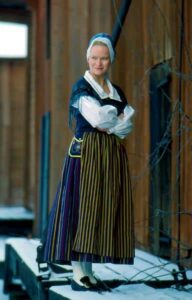
Each parish has a unique folk dress. Parish folk dress can be recognized by its style, colors, and patterns.
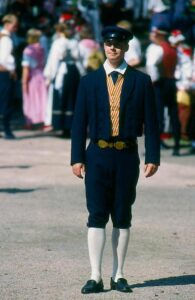
Borgå folk dress photos used with permission of the Brage costume agency. 3
Resources:
- Borgå Parish, Genealogical Society of Finland, HisKi project,, http://hiski.genealogia.fi/hiski/aba128?en+0412
- Borgå Parish, http://hiski.genealogia.fi/seurakunnat/srk?CMD=SRK&ID=412&TYPE=HTML&LANG=EN
- Borgå Folk Dress image, Brage costume agency, Men’s – https://www.brage.fi/sve/draktbyra/draktbyran/folkdrakter/view-163648-104 Woman’s – https://www.brage.fi/sve/draktbyra/draktbyran/folkdrakter/view-163648-105
- Diet of Finland at Porvoo Cathedral, image https://commons.wikimedia.org/wiki/File:Diet_of_Porvoo.jpg
- Porvoo Cathedral: https://en.wikipedia.org/wiki/Porvoo_Cathedral
- Porvoo Cathedral: https://www.domkyrkan.fi/kyrka-och-lokaler/borga-domkyrka
- Porvoo Cathedral image: https://commons.wikimedia.org/wiki/File:Porvoo_Cathedral_03.jpg
- Porvoo Cathedral image showing bell tower: https://commons.wikimedia.org/wiki/File:Porvoo_Cathedral_03.jpg
- Porvoo Parish: http://hiski.genealogia.fi/seurakunnat/srk?CMD=SRK&ID=412&TYPE=HTML&LANG=EN
- Porvoo Parish Communion Records: 1869-1878 – https://www.sukuhistoria.fi/sshy/kirjat/Kirkonkirjat/porvoo/rippikirja_1869-1878_ruotksrk_mko422-457/1.htm 1880-1889 – https://www.sukuhistoria.fi/sshy/sivut/HisKi-digiarkisto.php?bid=11742

